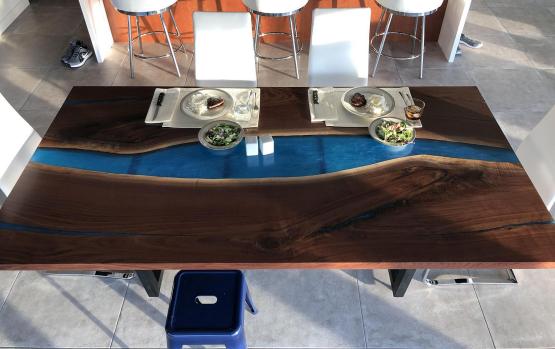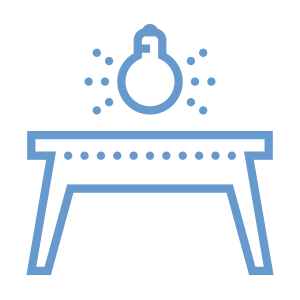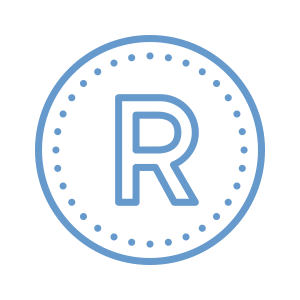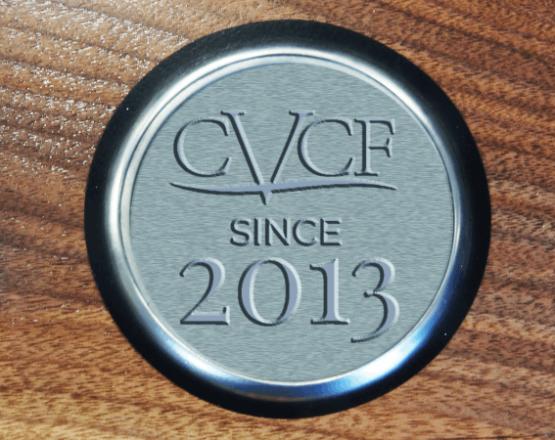Boat Shaped Conference Room Table FAQs
What Is The Best Table Shape For a Meeting?
The best table shape for a meeting depends on the specific goals and dynamics of the meeting, the number of participants, and the available space. Different conference table shapes offer various advantages and suit different scenarios. Here are some common table shapes and their characteristics:
- Rectangular or Long Oval Table: These table shapes are often preferred for formal boardroom-style meetings. They allow for a clear head of the table, where a leader or presenter can sit, and they facilitate a structured, organized layout. Long tables are ideal for larger groups, but they can make communication between participants at opposite ends more challenging.
- Round Table: Round tables are great for fostering collaboration and open discussion. They create a sense of equality among participants because there is no head of the table. Round tables work well for smaller groups, up to 6-8 people, where face-to-face communication is crucial. However, they may not be as space-efficient as rectangular tables for larger groups.
- Square Table: Square conference tables are a compromise between rectangular and round tables. They encourage discussion and are suitable for small to medium-sized groups. A square table allows everyone to have a clear view of each other, making it easier to engage in group conversations.
- Boat-Shaped Table: Boat-shaped tables combine the advantages of both rectangular and round tables. They have a more modern and aesthetically pleasing design, with a curved shape that promotes a sense of equality while allowing for a clear presentation area.
- U-Shaped or Horseshoe Table: These tables are excellent for meetings that involve presentations or discussions involving a leader or presenter. The open end of the U-shape allows the leader to face the participants while maintaining an intimate setting for group discussions. They work well for smaller to medium-sized groups.
- Collaborative or Modular Tables: These modular conference tables are versatile and can be arranged in different configurations to support collaborative work. They are ideal for interactive and creative meetings where participants need to work together in small groups.
- Trapezoid Conference Tables: Trapezoid tables have four sides, with one pair of opposite sides being parallel, and the other pair non-parallel. The shape allows for flexibility in arranging multiple tables together, creating various configurations to suit different meeting setups. They are often used in conjunction with other trapezoid or rectangular tables to form larger conference setups.
- Triangular Conference Tables: Triangular tables have three sides. They are less common than trapezoid or rectangular tables but can provide an interesting and dynamic look to a conference room. They are suitable for smaller groups and can be arranged to create a more intimate setting. They also offer a modern and unconventional aesthetic.
Ultimately, there's no one-size-fits-all answer, and the best table shape for a meeting will depend on the meeting's objectives, the number of participants, the level of formality, and the room layout. It's essential to choose a table shape that complements the meeting's purpose and fosters effective communication and collaboration among participants.
What Is The Ideal Conference Table Size?
The absence of a standard size for a conference table is primarily due to the highly variable nature of conference rooms and meetings. Conference rooms come in all shapes and sizes, and meetings can serve different purposes. Several factors contribute to this lack of standardization. For starters, the size and shape of a conference room can vary significantly, and a table that fits one room perfectly may be entirely unsuitable for another. Additionally, the seating capacity needed for different meetings varies, from small board meetings to large training sessions, so the table size must correspond to the number of participants. Meeting objectives, room layout, aesthetics, technology requirements, budget considerations, and comfort and accessibility all play a role in determining the right table size. As a result, organizations and individuals must carefully consider these factors to select a conference table that best meets their specific needs and the characteristics of their conference room, allowing for a more personalized and functional approach to meeting space design.
What Shape Is a Conference Table?
Conference tables come in various shapes, and each shape offers unique advantages and is suited to different types of meetings and room layouts. Here are some common shapes of conference tables:
- Rectangular: Rectangular conference tables are the most traditional and formal option. They are often used in boardrooms and executive meetings. They provide a clear head of the table, making them suitable for structured discussions. They come in various lengths to accommodate different group sizes.
- Oval: Oval tables combine the formality of a rectangular table with the collaborative advantages of a round table. They offer a sense of equality among participants and are ideal for medium-sized meetings where face-to-face communication is essential.
- Round: Round conference tables are excellent for promoting open discussion and collaboration. They create a sense of equality among participants, as there is no designated head of the table. Round tables work well for small to medium-sized groups.
- Square: Square tables are a compromise between rectangular and round tables. They encourage discussions and provide an equal seating arrangement for participants. Square tables are suitable for small to medium-sized meetings and can accommodate 4 to 8 people.
- Boat-Shaped: Boat-shaped tables are a blend of rectangular and oval designs. They have a more modern appearance with curved ends, creating an attractive and functional option for medium to large meetings.
- U-Shaped or Horseshoe: These tables are often used for presentations and discussions involving a leader or presenter. They allow the leader to face the participants while maintaining an intimate setting for group conversations. U-shaped tables work well for small to medium-sized groups.
- Modular or Collaborative: These tables come in various shapes and sizes, and their configuration can be adapted to suit the needs of different meetings. They are highly versatile, making them ideal for collaborative and interactive sessions.
- Custom Shapes: Some organizations opt for custom-shaped conference tables to suit unique room layouts or design preferences. These tables can take on various forms, such as octagonal or hexagonal, depending on the specific requirements.
The choice of table shape should align with the goals and dynamics of the meeting, the number of participants, and the room layout. Each shape offers its own advantages, and the selection should contribute to the effectiveness and comfort of the meeting.
What Is The Best Material For a Conference Table?
Wood is a classic and popular choice for conference tabletops. It offers a warm and elegant look that complements various room styles. High-quality hardwoods, such as oak, cherry, walnut, and mahogany, are commonly used. Wood tables can be solid or veneer. We always recommend solid wood over veneer for durability and as a legacy piece of furniture. Unlike veneers, wood tables can be refinished if damaged. High-quality wood tops convey a sense of professionalism and elegance.






